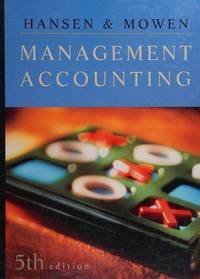Boyce Products manufactures products with life cycles that average three years. The first year involves product development,
Question:
Boyce Products manufactures products with life cycles that average three years. The first year involves product development, and the remaining two years emphasize production and sales. A budgeted life-cycle income statement developed for two proposed products follows. Each product will sell 200,000 units. The price has been set to yield a 50 percent gross margin ratio.
Product A Product B Total Sales $4,000,000 $5,000,000 $9,000,000 Cost of goods sold 2,000,000 2,500,000 4,500,000 Gross margin $2,000,000 $2,500,000 $4,500,000 Period expenses:
Research and development (2,000,000)
Marketing (1,150,000)
Life-cycle income $1,350,000 Upon seeing the budget, Rick Moss, president of Boyce Products, called in LeeAnn Gordon, marketing manager, and Art Cummings, design engineer.
Rick: These two products are earning only a 15 percent return on sales. We need 20 percent to earn an acceptable return on our investment. Can’t we raise prices?
LeeAnn: 1 doubt the market would bear any increase in prices. However, I will do some additional research and see what's possible. The gross-profit ratio is already high.
The problem appears to be with R&D. Those expenses seem higher than normal.
Art: These products are more complex than usual, and we need to have the extra resources—at least if you want to have a product that functions as we are claiming it will. Also, we are charting some new waters with the features these products are offering. Specifically, our design is intended to reduce the postpurchase costs that consumers incur, including operation, support, maintenance, and disposal. LeeAnn, if you recall, you mentioned to us a year ago that our competitors were providing products that had lower postpurchase costs. This new design is intended to make us market leaders in this area. At any rate, in the future, we can probably get by on less—after we gain some experience. But it wouldn’t be much less, perhaps $50,000.
Rick: That would still allow us to earn only about 15.6 percent—even after you get more proficient. Maybe we ought to stay with our more standard features.
LeeAnn: Before we abandon these new lines, perhaps we ought to look at each product individually. Maybe one could be retained. These new features will give us an edge in the market. Also, I'll bet that if he knew what was driving those costs, Art could redesign the product so that production costs could be lowered. I’m concerned that our competitors will exploit their postpurchase cost advantage. We really need to be leaders in this postpurchase area—our reputation is at stake. If we’re not careful, we could begin losing market share.
Required:
1. What specific improvements would you suggest to Rick to improve Boyce’s lifecycle cost management system?
2. Assume that the “period” expenses are traceable to each product. Product A is responsible for 60 percent of R&D costs and 50 percent of marketing costs. Prepare a revised income statement for each product. Based on this analysis, should either product be produced?
3. Based on the revised income statements (of Requirement 2), what is the total tar- get cost for each product? How much must production costs be reduced to make each product acceptable? Discuss how activity analysis and target costing can help achieve this outcome. Explain why this should occur now and not after the products are in production.
4. According to Art, the motivation for the new design was to reduce the post- purchase costs of the new products. Explain why whole-life cost should be the focus of life-cycle cost management.
Step by Step Answer:






